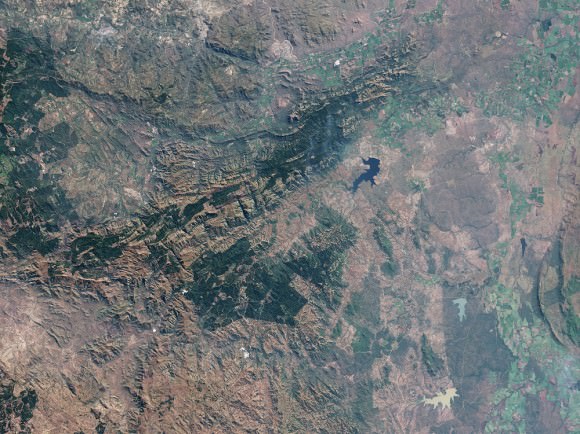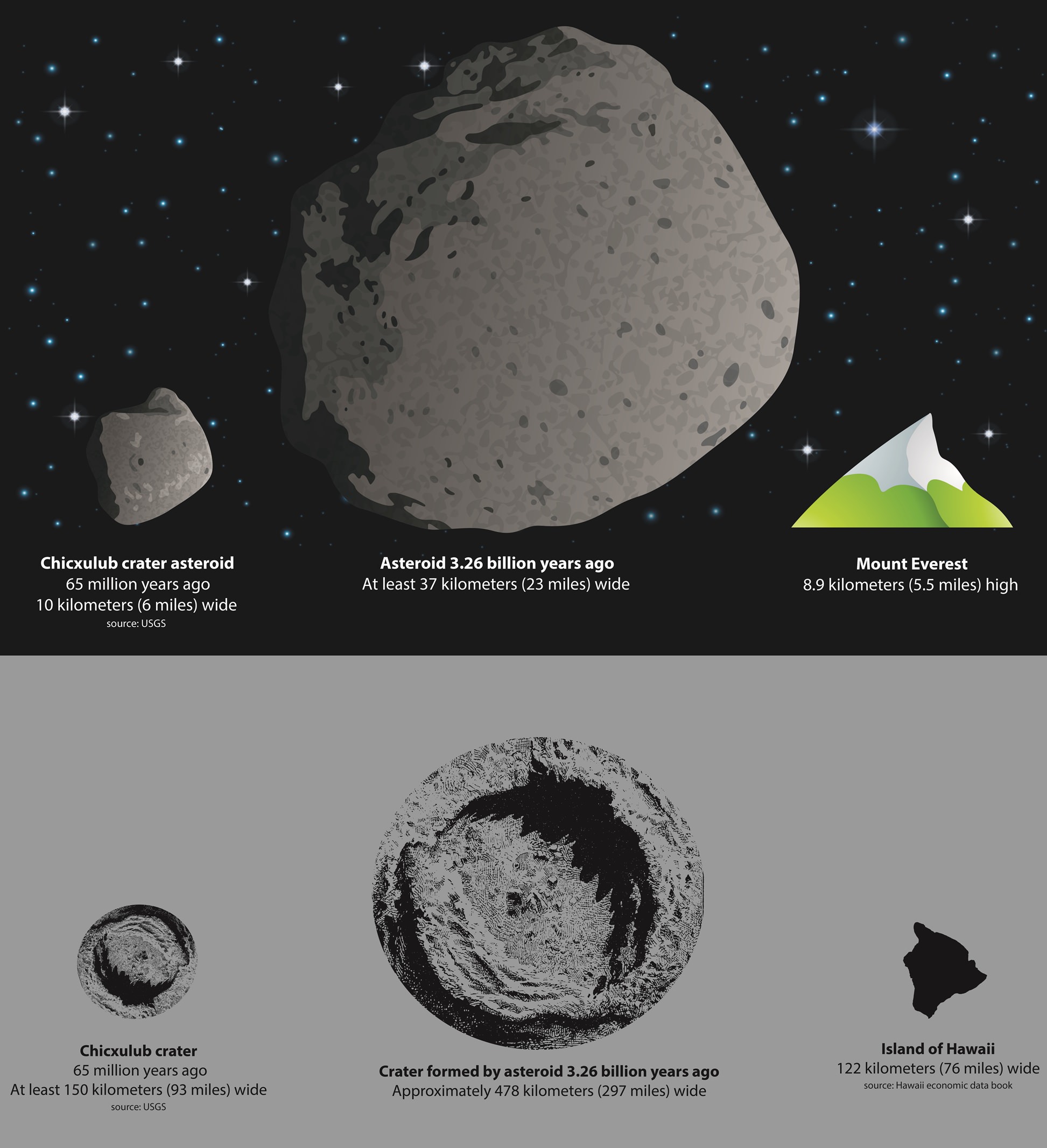Early in Earth’s history, a killer asteroid smashed a hole in our planet about 300 miles (500 kilometers) wide, which is greater than the driving distance between Washington and New York City, a new study says. The space rock set off a cycle of destruction that sounds like your worst nightmares.
That one reported collision 3.26 billion years ago made the Earth tremble, created earthquakes and set off tsunamis that were thousands of meters deep, according to a new research team. The size of this estimated destructor? About 37 kilometers (23 miles) wide, or about three times as wide as the asteroid that killed the dinosaurs 65 million years ago.
“We knew it was big, but we didn’t know how big,” stated co-author Donald Lowe, a geologist at Stanford University and a co-author of the study, of the asteroid.
Evidence of the huge impact — the first one mapped from so long ago — comes from an examination of the Barberton Greenstone Belt in South Africa, which shows rocks and “crustal fractures” that are consistent with the idea of a giant impact, the scientists said. (The asteroid struck the Earth thousands of miles away, but where isn’t known.)

If confirmed, the asteroid could have been one of many that smacked Earth during what is known as the Late Heavy Bombardment period, which pummeled the solar system with debris between 3 billion and 4 billion years ago.
This one event could even have changed the way the Earth formed, the scientists added. For example, it could have been broken up our planet’s crust and tectonics, creating the plate tectonics we are familiar with today.
You can read more about the research in the journal Geochemistry, Geophysics, Geosystems. It was led by Norman Sleep, a geophysicist at Stanford University.
Source: American Geophysical Union

